 |
 |
 |
| |
High Exposure to Antilipid Drugs
Tied to Lower Mortality in Older HIV Group
|
| |
| |
IDWeek 2022, October 19-23, 2022, Washington, DC
Mark Mascolini
After statistical adjustment for inherent cholesterol variability in 15,860 older people with HIV infection, high or dual exposure to lipid-lowering drugs strongly predicted "substantially lower mortality" [1]. Researchers at the VA North Texas Health Care System and the University of Texas Southwestern Medical School offered evidence that this association can be partly explained by reduced serum cholesterol variability, particularly variability of "good" high-density lipoprotein (HDL) cholesterol.
The VA/Texas team explained that their study period, 2001-2011, came before 2013 AHA/ACC cholesterol guidelines, a period when dual lipid-lowering therapy was common and use of tenofovir disoproxil fumarate (TDF), the only lipid-lowering antiretroviral, was Crestor. These investigators recently linked consistent use of antilipid agents to lower mortality in veterans with HIV [2]. They also noted other work establishing strong inverse associations between cholesterol variability and mortality in the general population. Greater variability in serum cholesterol from visit to visit, the researchers added, has emerged as "an important atherosclerotic cardiovascular disease (CVD) and mortality risk factor" [3,4].
For this analysis, the VA/Texas collaborators created a virtual cohort of all HIV-positive US veterans who reached an undetectable viral load on antiretroviral therapy in the years 2001-2011. From medical records, they extracted several measures of HDL and non-HDL cholesterol: absolute value, coefficient of variation for 1-year intervals, current value, and native value (the last reading without lipid-lowering drug exposure). Then they created a marginal structural model with an endpoint of death from any cause. The model involved 32 covariates and 6 interaction terms: demographics, VA care-related factors, HIV disease-related factors, metabolic factors, comorbidities, and 1 year percentage of days covered (PDCs) for cardiovascular drugs and antiretrovirals. They considered three lipid-lowering classes: statins, nonstatin agents (like gemfibrozil and fenofibrate), and TDF.
The 15,860 cohort members had a median age of 54.7 at enrollment, 97% were men, 50% black, and 38% white. Median follow-up time measured 4.3 years (interquartile range 2.1 to 7.1). Over the study period, CVD prevalence jumped from 16% to 25% and 2269 people died, 39% from cardiovascular disease. Half of all cohort members with CVD died, compared with only 20% of those without CVD.
Next the researchers created six antilipid agent exposure categories incorporating both drug exposure intensity and number of different antilipid classes used during that time: no exposure, exposure below 50% (low), single exposure 50% to 94% (high), double exposure 50% to 94% (high), single exposure at or above 94% (consistent), and double exposure at or above 94% (consistent).
A multivariable Cox model excluding lipid-lowering drug exposure determined that HDL cholesterol variability independently predicted mortality: 1-year HDL cholesterol variability of 0.15 to 0.19 predicted death at a nonsignificant hazard ratio of 1.19 (95% confidence interval [CI] 0.95 to 1.50, P = 0.13); 1-year HDL cholesterol variability of 0.19 to 0.25 significantly predicted mortality at a hazard ratio of 1.30 (95% CI 1.06 to 2.25, P = 0.01); and 1-year HDL cholesterol variability above 0.25 predicted mortality at a hazard ratio of 1.90 (95% CI 1.60 to 2.25, P < 0.0001).
In the inverse probability-weighted combined lipid-lowering agent exposure model, most follow-up time occurred with antilipid exposure above 50% and most deaths occurred in people with low or no exposure. When the researchers first adjusted for inherent cholesterol variability, the impact on mortality was significant. Mortality risk fell as antilipid agent exposure increased through the exposure categories defined above. But time-updated cholesterol variability significantly weakened the association with mortality for all antilipid exposure levels above 50%. The researchers proposed this finding means "reduced cholesterol variability may indeed lie on a causal pathway between consistent lipid-lowering agent exposure and reduced mortality."
When the model also adjusted for absolute cholesterol values, it showed a strong association between high cholesterol and increased mortality. But including absolute cholesterol values in the model had an impact on the effect size for lipid-lowering agent exposure. That development, the investigators believe, "would imply that absolute cholesterol values achieved during exposure to lipid-lowering agents do not lie on that hypothetical causal pathway."
"When adjusting for inherent cholesterol variability," the researchers offered in summary, "high or dual exposure to lipid-lowering agents remains strongly associated with substantially lower mortality in this cohort of older people living with HIV."
References
1. Drechsler H, Ayers C, Bedimo R. Serum cholesterol variability and mortality in PLWH on lipid-lowering therapy. IDWeek 2022, October 19-23, 2022, Washington, DC. Abstract 2360.
2. Drechsler H, Ayers C, Cutrell J, Arasaratnam R, Bedimo R. Consistent use of lipid lowering therapy in HIV infection is associated with low mortality. BMC Infect Dis. 2021;2:150. doi: 10.1186/s12879-021-05787-4.
https://bmcinfectdis.biomedcentral.com/articles/10.1186/s12879-021-05787-4
3. Simpson WG. Biomarker variability and cardiovascular disease residual risk. Curr Opin Cardiol. 2019;34:413-417.
4. Kim MK, Han K, Kim H-S, et al. Cholesterol variability and the risk of mortality, myocardial infarction, and stroke: a nationwide population-based study. Eur Heart J. 2017;38:3560-3566.
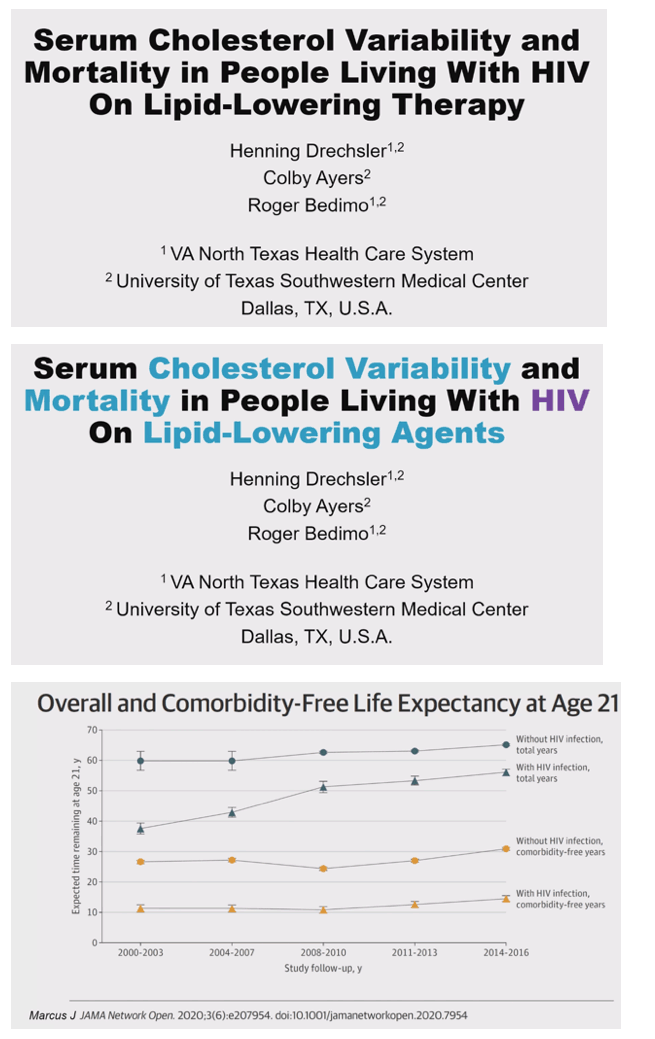

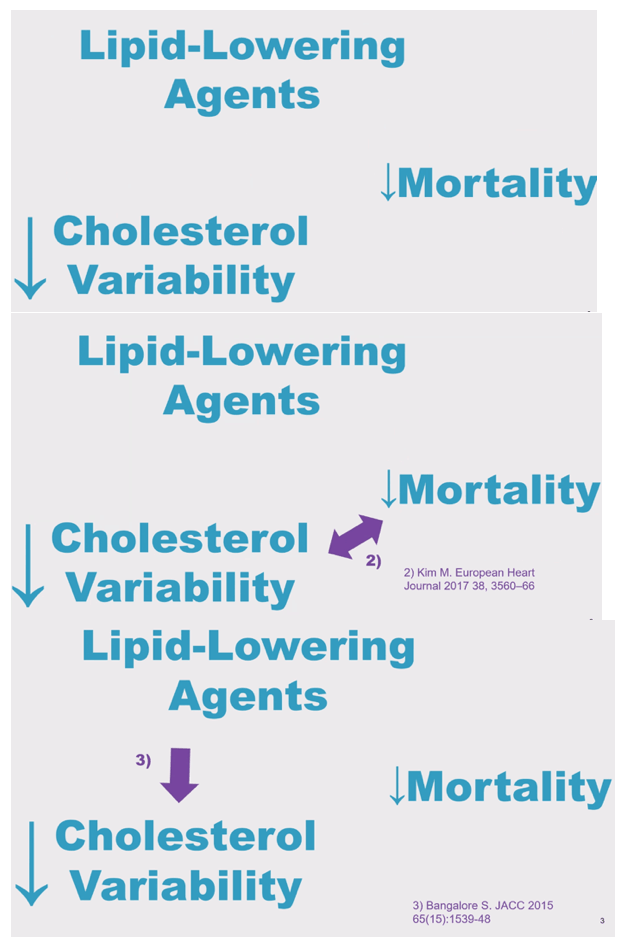
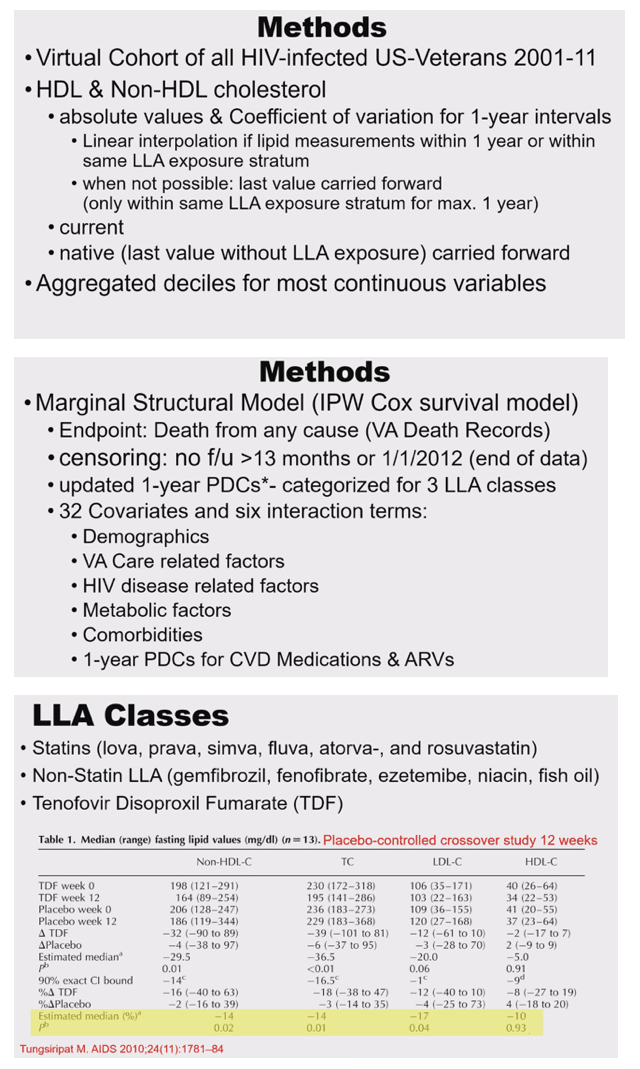
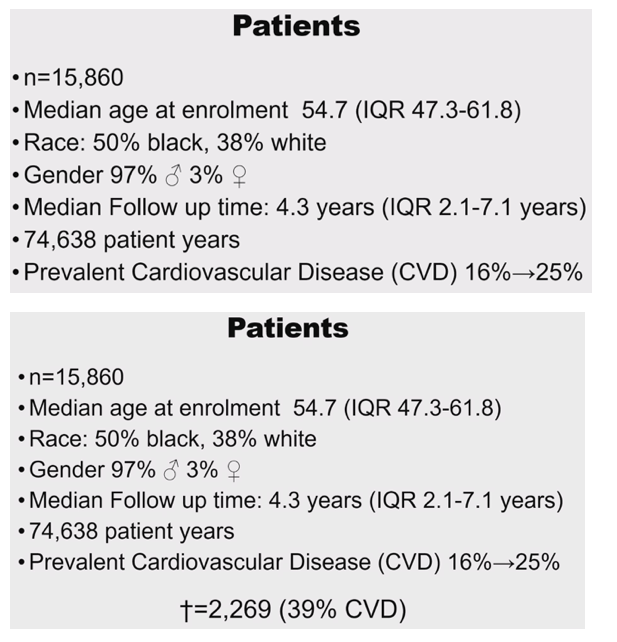
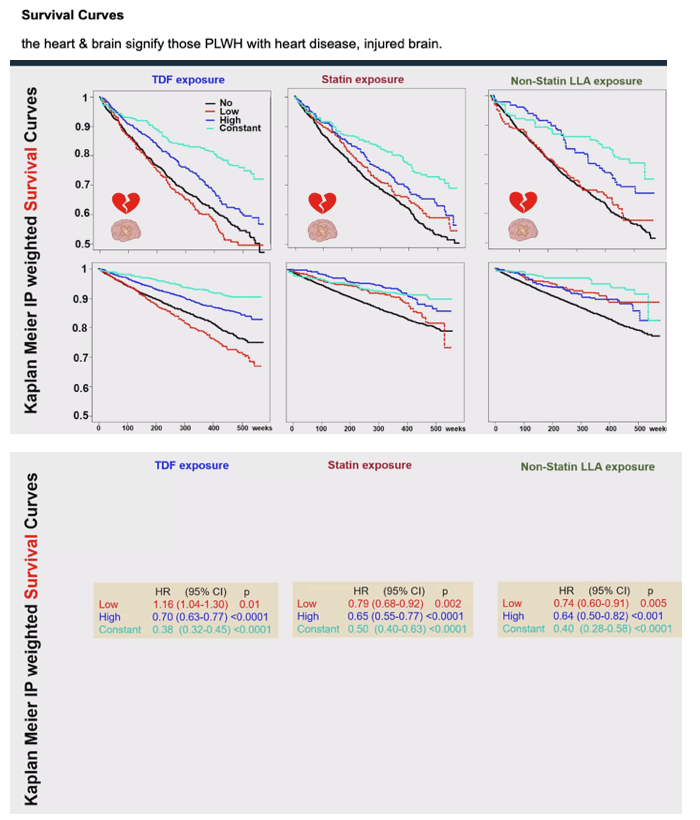
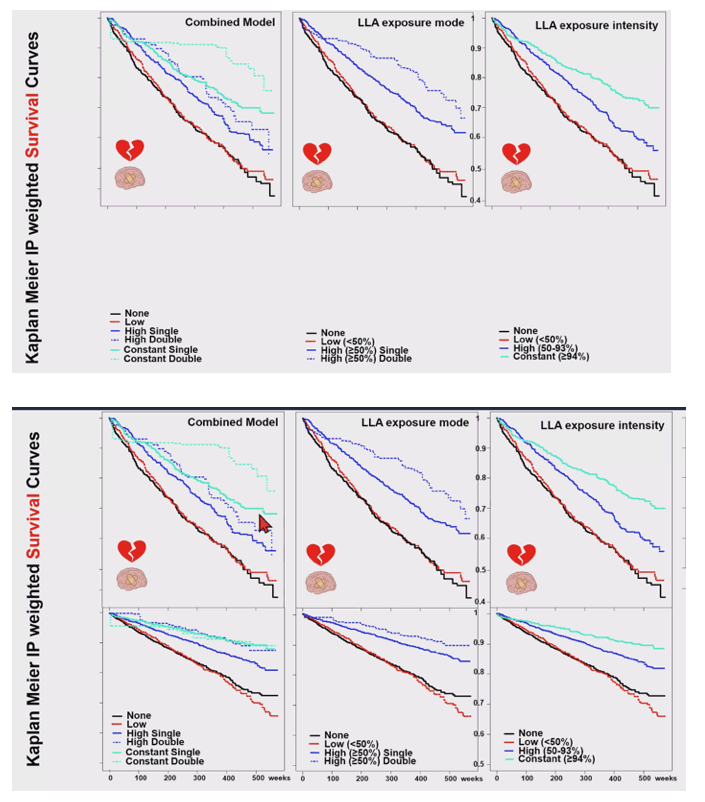
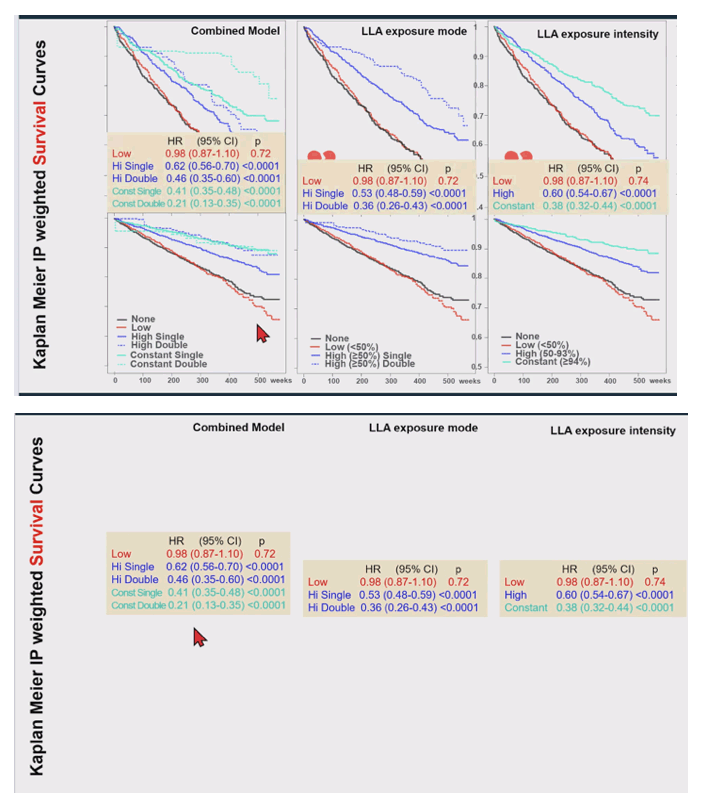
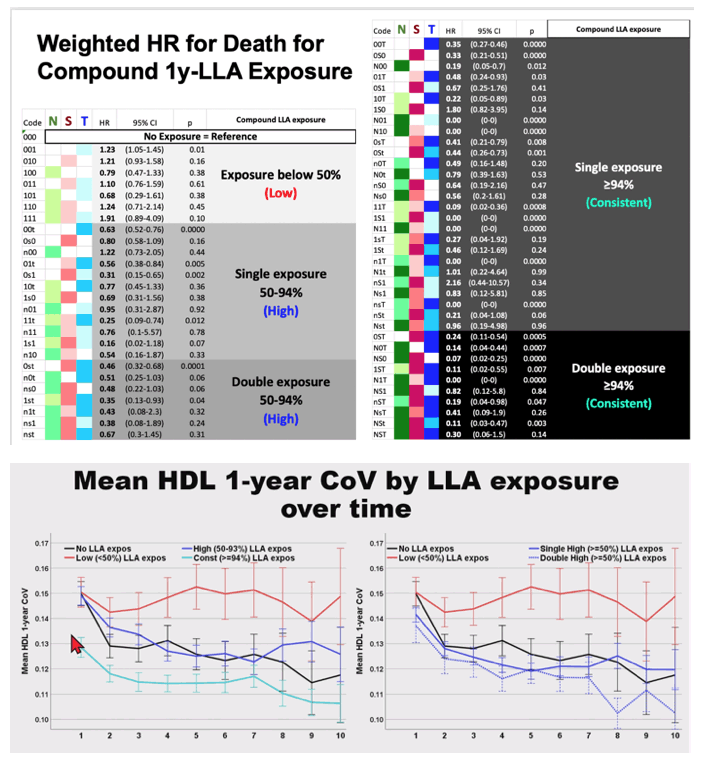
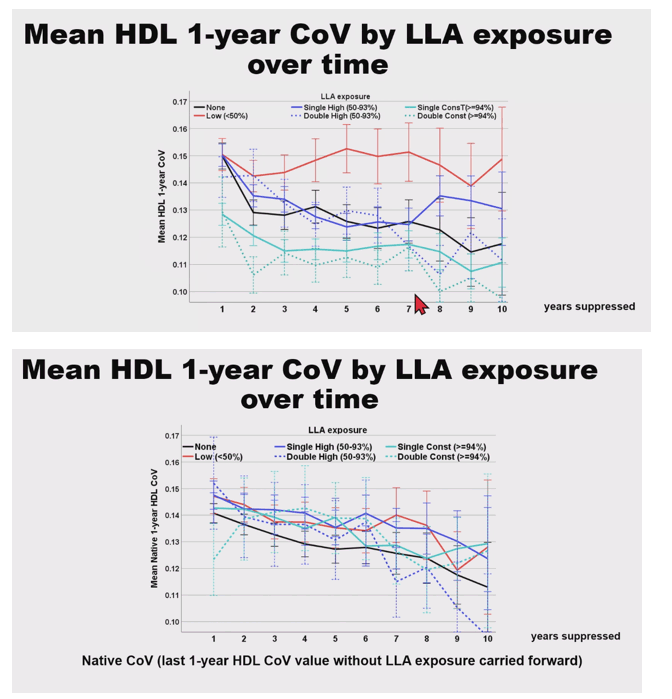
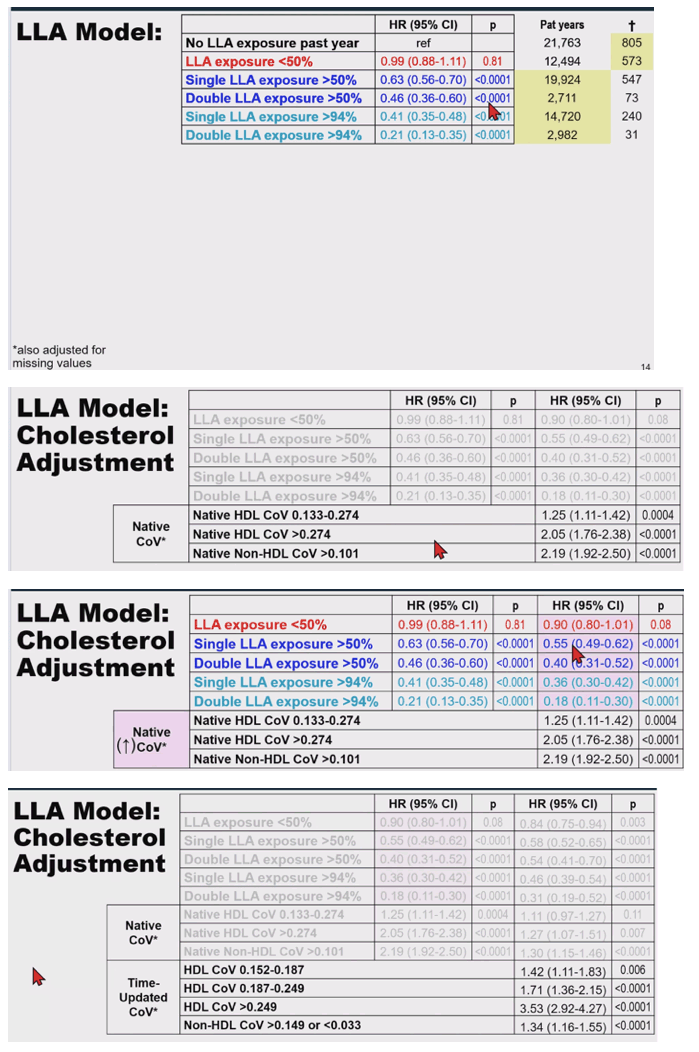
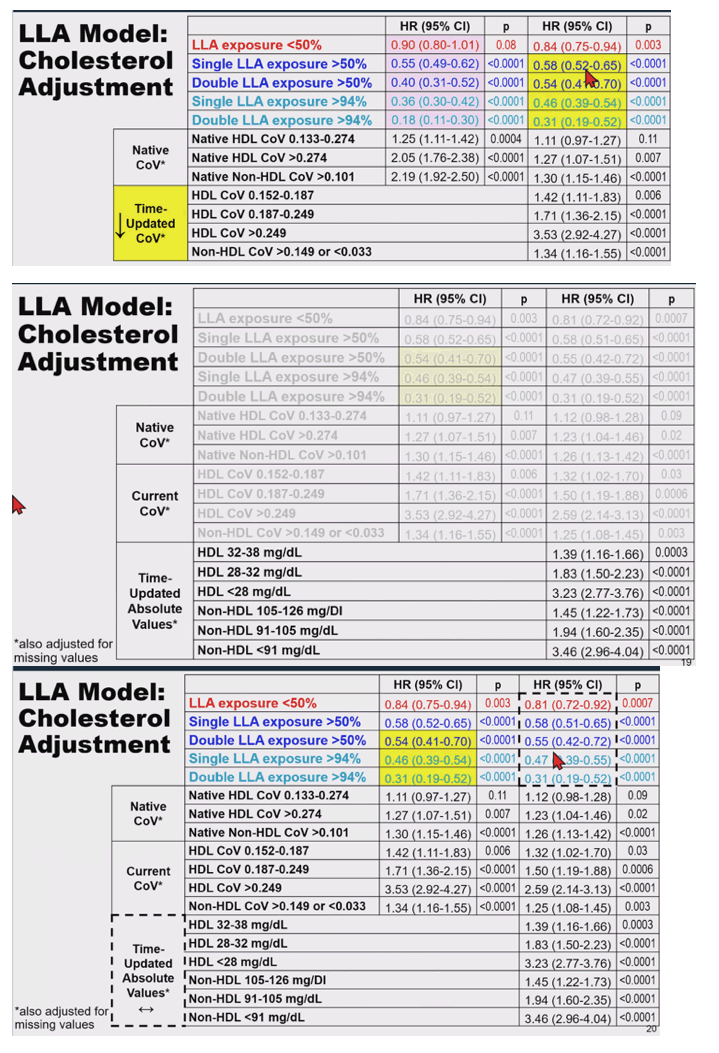
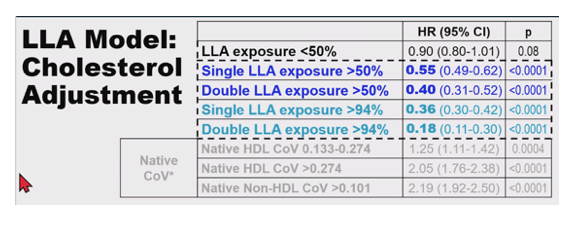
|
| |
|
 |
 |
|
|